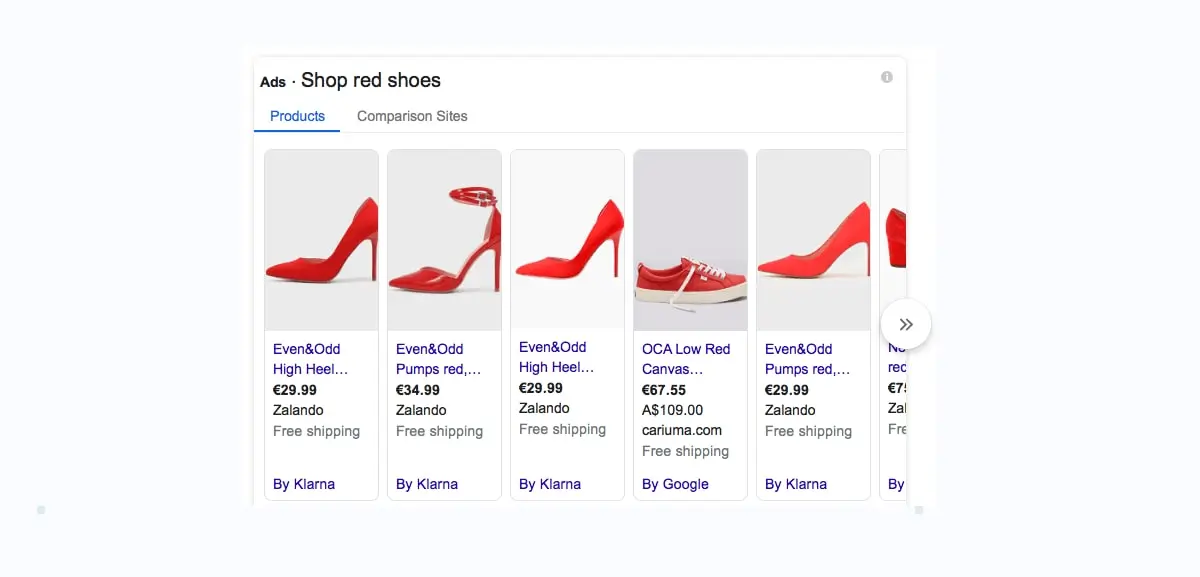If you’re new to digital marketing, one of the first things to get to grips with is the different marketing channels. A marketing channel is a tool or a platform used to communicate with your audience—be it to promote a product or service, or create a buzz around your brand.
In this guide, we’ll explore some of the main marketing channels commonly in use today. We’ll also briefly introduce the topic of multi-channel marketing. We’ve broken our guide down as follows:
- What is a marketing channel?
- What are the main marketing channels?
- An introduction to paid search
- An introduction to SEO
- An introduction to social media marketing
- An introduction to content marketing
- An introduction to email marketing
- An introduction to SMS marketing
- What is multi-channel marketing?
- Key takeaways and further reading
First things first: Let’s define exactly what we mean by “marketing channel.”
1. What is a marketing channel?
A marketing channel is any medium (television, email, printed mailers, radio, social media, etc.) used to promote a business. Digital marketing channels encompass any medium that involves the internet or digital technology. Seeing as people spend significantly more time online today than they used to—for shopping, learning, and entertainment—even 10 years ago, digital marketing has become the centerpiece of many a savvy business strategy.
While television, radio, print ads, billboards, and other non-digital marketing channels are still popular, digital marketing’s unprecedented ability to zero in on niche markets and track results has led businesses to rethink how they allocate their marketing budgets.
Digital marketing channels are also accessible to small businesses and entrepreneurs. Anyone can afford to set up Google or Instagram ads on a shoestring budget; not everyone has access to the capital needed for large-scale television commercials.
This article will review some of today’s hottest marketing channels and reveal how you can take advantage of them to take your business to the next level.
Learn more: The top content types for marketing professionals

2. What are the top marketing channels?
People consume content during virtually every waking moment (no one likes being bored today), and advertisements accompany the vast majority of that content. Even if you’re not actively reading a newspaper or scrolling through Facebook, you’re bombarded by branded merchandise (like your co-worker’s Starbucks mug) or are passively exposed to bus ads and fliers sent to your mailbox.
There are dozens of marketing channels you might use. The key is figuring out which ones are worth your time, energy, and resources! This post will review several of the top digital marketing channels that anyone, regardless of budget or experience, can use to build their brand and reach their core marketing objectives. You’ll learn about:
- Paid search
- SEO (search engine optimization)
- Social media
- Content marketing
- SMS marketing
By the time you finish this article, you’ll be well-versed in what each channel is, what you can use it for, and why it’s worth investing in.
Learn more: What is cross-channel marketing? A complete beginner’s guide

3. Paid search
Paid search, otherwise known as pay-per-click (PPC), is one of the oldest forms of digital marketing. Considering the internet is barely middle-aged at this point, that’s saying a lot! With paid search marketing, you pay every time someone clicks on one of your ads.
You may have even clicked on one such ad without realizing it. You’ll find the most prominent example of paid search ads on Google search results. For example, if you type in “red shoes,” you’ll probably see results that look like this at the very top of the page:

These are what are known as PLAs, or Product Listing Ads. You’ll see them crop up frequently when you are shopping for eCommerce items.
Another form of paid search are the ads that appear below the PLAs but above the organic search results.

You can always tell when a result is an ad because it will say “Ad” right next to the URL.
Paid search ads are on Google, Yahoo, and Bing search results, but Google searches account for almost 88% of the total searches worldwide. This doesn’t mean investing in Bing or Yahoo is not cost-effective; however, you’ll probably generate a greater volume of results through Google.
If you invest in paid search ads, you’ll almost guarantee traffic to your website. There’s a reason advertisers spend over $100 billion per year worldwide on paid search! When investing in paid ads, it’s important to track how effective they are by setting up conversion tracking. This will tell you how much you’re paying to acquire each lead or purchase that results from a paid ad.

4. Search Engine Optimization (SEO) marketing
Both paid search and SEO are considered forms of “search engine marketing” (SEM). They both rely on search engines, but SEO focuses on organic search results (read: free), while paid search costs money. Both have their pros and cons. We compare SEO vs SEM here, but keep reading for a definition of SEO first!
SEO involves understanding what factors influence the search engine algorithms and implementing as many as possible on a website to get it to rank highly on the search engine results pages (SERPs).
Sound confusing? Think of it this way: Google/Bing/Yahoo’s main goal is to serve up answers that satisfy its customers’ queries. It “knows” that web pages that exhibit certain characteristics are more likely to answer a searcher’s question, so it takes them into consideration when ranking the search results.
For example, a very basic criteria for ranking in Google is including all or most of the search terms in the title of your page, the header, and in the body content. Caveat: Doing this will not guarantee that your page will rank (not by a long shot), nor will ignoring part of this recommendation prevent you from ranking. However, if you follow it, it will be one more point in your favor that will contribute to your rank.
Why does Google consider including search terms important? Well, first of all, it provides a better user experience. If someone searches for “dog grooming New York City” and the first search result they click on is for a dog groomer in Wyoming, that’s not going to satisfy them.
Likewise, if they click on a result that has all the right characteristics (includes the terms in the title, header, and content) but is actually promoting a Wyoming-based dog groomer, Google will figure out pretty quickly that this site is trying to trick the algorithm. It does this by tracking how many other pages a user visits on that site after clicking and how long the user stays on the site. If thousands of users are immediately exiting the site, it’s a sign that this is not a good result for Google to show for the query “dog grooming New York City.”
While there are dozens (maybe even hundreds!) of factors that influence how the search engines rank your content, the best thing you can do to convince them that yours deserves the top slot is by providing high-quality content. It should be original (no plagiarism) and attempt to answer a user’s question as efficiently as possible. Someone searching for a NYC-based dog groomer should arrive on (surprise!) an NYC-based dog groomer’s website after clicking a top link in the SERPs.
Additionally, keep in mind that search engines use web crawlers to “read” and catalog a website’s content. That means blog posts, product pages, video/audio transcripts, etc., can all rank for specific queries. Yet web crawlers can only read code; they cannot interpret images or PDFs that are not optimized for screen readers, so if your website relies a lot on either of these, you’re missing out.
While you don’t technically pay for a top slot on the SERPs, SEO is time-consuming (creating content takes time and resources), and there is no guarantee you’ll ever break into the coveted top five results. However, if you do manage to rank highly for a top query (or several), you’ll be able to generate consistent web traffic at no cost. Ideally, this web traffic will translate into sales or leads for your business.

5. Social media marketing
Unless you’ve judiciously avoided using the internet for the past several years, you’ve probably heard of social media. Top platforms include Facebook, Instagram, TikTok, and Twitter (but there are several more). According to USwitch, social media enthusiasts spend significant time on these platforms—Brits spend an average of 1.8 hours per day scrolling through them—making them an ideal marketing channel to reach your target audience.
Here is a rundown of some of the most popular social media platforms:
- Facebook: Started by Mark Zuckerberg out of his college dorm room in 2004, Facebook has come a long way from its humble roots as an online yearbook (a “face book,” if you will). It now boasts almost 3 billion monthly active users and generated over $84 billion in advertising revenue in 2020. Facebook’s exceptional audience targeting abilities and massive base make it a popular marketing channel for millions of businesses. Thanks to its Facebook Shops feature (which is also available on Instagram), this behemoth has enabled even the tiniest of small businesses to snag a piece of the social media pie.
- Instagram: Now owned by Facebook, Instagram’s feed of candy-colored, artfully curated photos and videos is an addictive way to spend a few idle minutes (or hours). Businesses love its shopping features, which include a storefront, collection and product detail page options, and checkout.
- Twitter: If you’ve got something to say and can condense it into fewer than 280 characters, by all means, share it on Twitter. Around 186 million users logged on in 2020, making it a substantial contender for your marketing strategy. You can post videos, images, or just plain text, and pay to reach specific target audiences.
- TikTok: TikTok is a social media newbie that’s growing fast. Since its launch in 2016 in China, its user base has swelled to an incredible 1 billion users worldwide, each of whom spends an average of 856 minutes per month on it. Shopify customers can sell directly through TikTok through the TikTok add-on, but you can also use it to boost brand awareness and top-of-funnel online presence.
- Pinterest: A virtual corkboard filled with curated images meant to inspire, Pinterest appeals to a very specific user base. Pinterest has 478 million active monthly users, most of whom are ages 18-64, with almost 40% in the 50-64 age group.
Before spending tons of time and money building your online presence on social media, make sure your audience spends time on the platforms you’re using. TikTok is perfect if your target shopper is a 13-year-old girl; it’s not so great if the majority of your customers are retired octogenarians.
Also, keep in mind that, like any other marketing channel, social media is competitive. It takes significant time and effort to build a following and keep them interested. Thousands of brands are competing for the same eyeballs. Though the market is massive (Instagram alone has over 1 billion users), you’ll most likely need to invest in some sort of paid promotion to actually generate substantial brand awareness, leads, or revenue.
If you’re curious about a career in social media, check out our guide to social media jobs and career paths.

6. Content marketing
Creating blog posts, infographics, videos, whitepapers, and other forms of valuable content to share on marketing channels has become a popular way to generate top-of-funnel leads and brand awareness. Content marketing, as this practice is known, has increased over the past several years as people embraced social media, and the competition for top search engine results has gotten positively cutthroat.
One key to a successful content marketing strategy involves understanding your target customers’ buyer journey so you can create assets that answer questions they have during the first few stages. Customer journeys include multiple brand touchpoints before a shopper ultimately decides to purchase, and content marketing can help you break through a crowded market to kick off this process.
When you do share content, consider gating it (requiring that a user provide some contact information in order to access it) so you can get them into your marketing funnel. For example, if you created a research study that would be of interest to your target market, have them submit their email address to download the report, then send them follow-up emails to help them remember your brand and excite them about buying from you in the future.

7. Email marketing
Speaking of email marketing, this marketing channel is one of the best ways to generate a significant ROI. Litmus research estimates that for every $1 you put into email, you’ll receive $42. What makes it so lucrative?
For one thing, users generally opt in to receive emails. In fact, many countries now have laws banning the practice of adding users to your email marketing list without their consent. This means buying lists is a big mistake. Not only will users be confused about why they’re suddenly receiving emails from your brand, but they’ll most likely unsubscribe, which defeats the point! If a user has opted in to hear from you, they are most likely interested in what you have to say and the products you offer.
Email marketing also gives you the opportunity to expose people to your brand multiple times. Since most people don’t decide to buy the first time they learn about your products, the ability to connect with them on several occasions increases the possibility of a sale.
The same thing goes for building brand loyalty. If you can consistently remind current customers you exist and share valuable promotions with them, they’re much more likely to become repeat customers.

8. SMS marketing
SMS stands for Short Message Service (in other words, text messages sent via phones). Like email marketing, SMS marketing is a terrific way to stay top of mind with your customers. You can send transactional messages (like order confirmations or shipping statuses) or promotional messages (such as flash sales). Even better, users open a whopping 95% of text messages, compared to much lower open rates for email and social media messaging. Moreover, this marketing channel is relatively underused, so you’ll be better positioned to break through the advertising chatter that bombards people on a daily basis.
Just as with email, you’ll need to get people to opt in to receiving your SMS texts. But that means they’re keen to hear from you, so it’s a win-win scenario.

9. What is multi-channel marketing?
Now that you’re aware of some of the top marketing channels savvy businesses use today, consider how they all fit together in your marketing strategy.
As mentioned earlier, a customer’s buyer journey will generally include multiple touchpoints with a brand before they reach the end and are ready to buy. You can influence their decision by engaging in multi-channel marketing, which is the practice of using several channels to connect with customers.
For example, you might post a link to a whitepaper or research study on Facebook. When a user clicks on the link, it will take them to your website, where they’ll need to enter their name and email address to gain access to the report. Once you have their contact information, you can use it to send them valuable information, promotions, and more via email.
Here’s another scenario: you create a blog post that ranks highly on organic search results for a particular query (say “How to unclog a drain”). When a user clicks on the search result and gets to your site, they can read the post and have the option to follow you on Twitter for more tips about unclogging drains.
The idea is to grab a user’s attention on one channel, then invite them to opt in to another channel that will keep you at the front of their mind. The more you can expose them to your brand on multiple channels, the more likely they’ll be to remember you. It’s important to note that multi-channel marketing is slightly different to omnichannel marketing, which we explain here.
When choosing which channels to use for your multi-channel marketing strategy, always keep your goals in mind. If your goal is brand awareness, social media is a great medium, so try content marketing on different platforms to see what garners the most followers and engagement. If you’re looking to acquire leads or generate sales, start with paid or organic search and lead them to SMS or email marketing so you can consistently ping them with content that will encourage them to take the next step with you.
Finally, track your results as much as you can. Use the Facebook pixel and UTMs (code you append onto the end of a URL) to help with attribution and see what works best. You won’t be able to optimize your campaigns if you don’t know what’s working to begin with!
10. Key takeaways and further reading
If reading this article has excited you about the possibilities of incorporating multiple channels into your marketing strategy, you have good reason to be amped up. An Omnisend study reported that using three or more marketing mediums per campaign resulted in a 287% higher purchase rate. Now that you’re aware of the top marketing channels, it’s time to put them to work! If you’re a newbie, start with one or two, test, track, and optimize. It’s the time-tested recipe for success.
If you’re reading about marketing channels with a view to starting a career in marketing, we can recommend the following resources:
